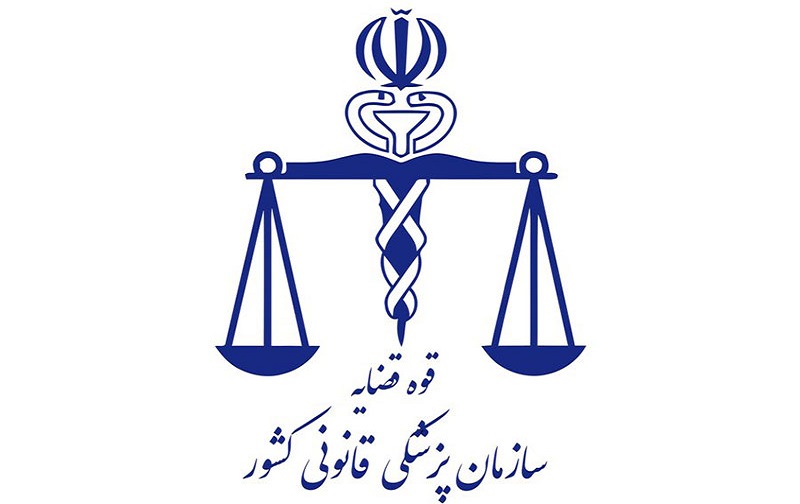AhlulBayt News Agency: Iran’s Legal Medicine Organization has released the results of its investigation into the case of Mahsa Amini, saying that her controversial death was caused by an illness rather than alleged blows to the head or other vital body organs.
The official medical report was released on Friday, some three weeks after the 22-year-old Iranian woman fainted at a police station and was pronounced dead days later on September 16 at a Tehran hospital.
“According to hospital documents, the study of CT scans of the brain and lungs, results of physical examination of the body and an autopsy, and pathological tests, the death of the individual was not caused by blows to her head, vital organs and limbs,” said the report.
Amini had undergone a craniopharyngioma surgery at the age of eight which led to the eruption of disorders in the hypothalamus and hypophysis gland, said the report, adding that the deceased used to take hydrocortisone, levothyroxine, and desmopressin as medication.
According to the report, Amini fainted on September 13, leading to a heartbeat interruption and blood pressure decrease as her body was not able to adjust to the new conditions considering her illness.
Ineffective cardiopulmonary resuscitation in the early minutes caused severe brain hypoxia, said the report, adding that she was pronounced dead on September 16 at Kasra Hospital due to multiple organ failure despite all efforts to save her.
Protests over the death of Mahsa Amini erupted first in her native Province of Kordistan and later in several cities, including the capital.
Although Iranian President Seyyed Ebrahim Raeisi immediately ordered a thorough investigation into the case, the protests soon turned violent, with rioters fatally attacking policemen and indulging in vandalism against public property in several cities.
The foreign-backed violent riots have also claimed dozens of lives from both security forces and innocent people as the Western media and Persian-language news networks continue to induce riots in Iran.
Meanwhile, Police Chief Brigadier General Hossein Ashtari said that no fault can be attributed to police forces in the case of Mahsa Amini.
Speaking at the Friday prayers in Tehran, Ashtari voiced regret over her death but said police forces were only doing their mission according to the law and enactments of the Supreme Council of the Cultural Revolution.
He rejected any sort of beatings when Amini was taken into custody.
Referring to the riots, Ashtari said “police cannot tolerate distortion of security by a number of rioters.”
/129
The official medical report was released on Friday, some three weeks after the 22-year-old Iranian woman fainted at a police station and was pronounced dead days later on September 16 at a Tehran hospital.
“According to hospital documents, the study of CT scans of the brain and lungs, results of physical examination of the body and an autopsy, and pathological tests, the death of the individual was not caused by blows to her head, vital organs and limbs,” said the report.
Amini had undergone a craniopharyngioma surgery at the age of eight which led to the eruption of disorders in the hypothalamus and hypophysis gland, said the report, adding that the deceased used to take hydrocortisone, levothyroxine, and desmopressin as medication.
According to the report, Amini fainted on September 13, leading to a heartbeat interruption and blood pressure decrease as her body was not able to adjust to the new conditions considering her illness.
Ineffective cardiopulmonary resuscitation in the early minutes caused severe brain hypoxia, said the report, adding that she was pronounced dead on September 16 at Kasra Hospital due to multiple organ failure despite all efforts to save her.
Protests over the death of Mahsa Amini erupted first in her native Province of Kordistan and later in several cities, including the capital.
Although Iranian President Seyyed Ebrahim Raeisi immediately ordered a thorough investigation into the case, the protests soon turned violent, with rioters fatally attacking policemen and indulging in vandalism against public property in several cities.
The foreign-backed violent riots have also claimed dozens of lives from both security forces and innocent people as the Western media and Persian-language news networks continue to induce riots in Iran.
Meanwhile, Police Chief Brigadier General Hossein Ashtari said that no fault can be attributed to police forces in the case of Mahsa Amini.
Speaking at the Friday prayers in Tehran, Ashtari voiced regret over her death but said police forces were only doing their mission according to the law and enactments of the Supreme Council of the Cultural Revolution.
He rejected any sort of beatings when Amini was taken into custody.
Referring to the riots, Ashtari said “police cannot tolerate distortion of security by a number of rioters.”
/129

